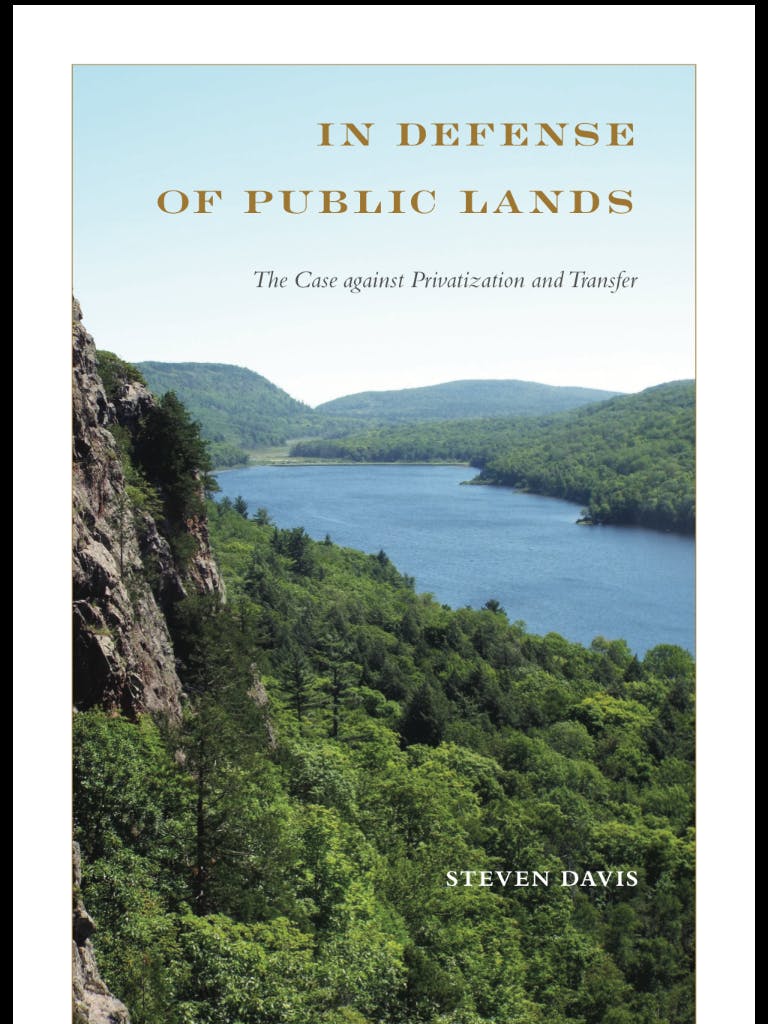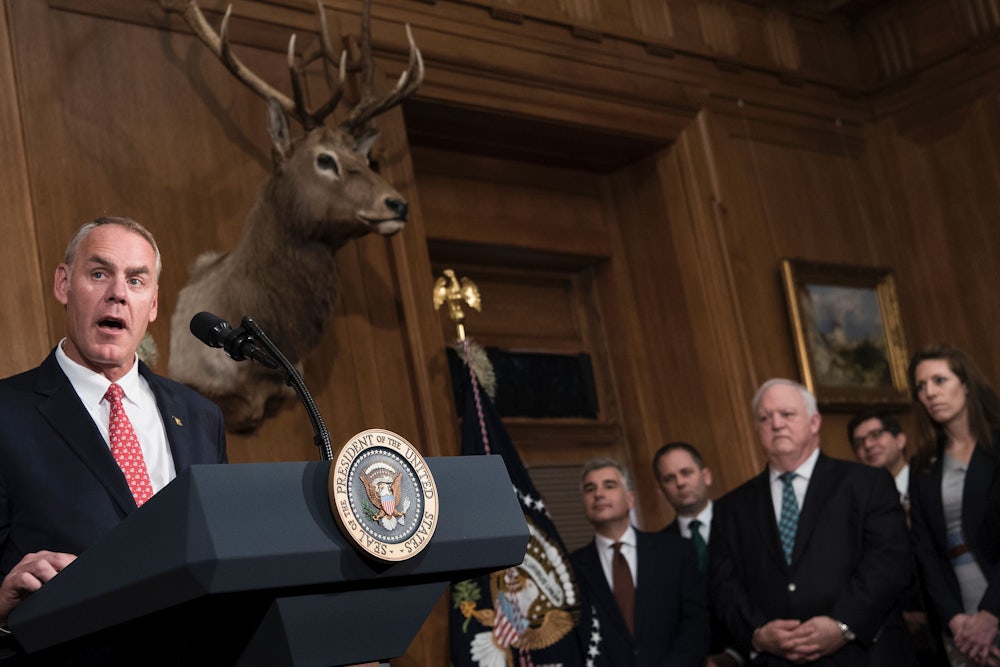If ever there was a time for a defense of the federal public lands system, it is now. Donald Trump’s Interior Secretary, Ryan Zinke, has expressed his contempt for the preferences of the American people by presiding over the largest rescissions of federal land protections in history. In 2017, a huge majority of Americans–99.2 percent by one measure—were in favor of the preservation of Utah’s Bears Ears and Grand Staircase-Escalante national monuments. Yet President Donald Trump, thirteen months after taking office, and acting on Zinke’s recommendations, reduced them in size by close to two million acres.
Right-wing think tanks such as the Heritage Institute, Cato Institute, Hoover Institution, Reason Foundation, and the American Legislative Exchange Council applauded the decision. These groups, many of them funded by energy industry magnates Charles and David Koch, have been at the forefront of claims that public lands, burdened with environmental regulations, are a drain on the American economy.

The ultimate goal of these groups, however, is not merely deregulation but a radical transformation of the more-than-century-old system of public ownership of hundreds of millions of acres of land, mostly in the Western states. Public lands, they say, should be privatized, sold off to the highest bidder for the best use, be it logging, cattle grazing, or exploitation for oil, gas, or hard-rock minerals. Subjected to market forces, the land, in this view, will yield a higher return to society than the current system that “locks it up” under the auspices of the National Park Service, the Bureau of Land Management, and the Forest Service.
These three land management entities, along with other federal agencies, oversee approximately one-third of all land in the country. No matter that overwhelming numbers of Americans have decided that they like the Park Service, the BLM, and Forest Service and want to keep the land as a vast commons.
A compelling rejoinder to the noxiously anti-democratic program of land privatizers is Steven Davis’s new book In Defense of Public Lands: The Case against Privatization and Transfer. The chief argument for privatization, writes Davis, is based on a reductionist calculation of the operating budget of public lands agencies compared with the revenue those lands produce. Government statistics show that it costs ten times more to run the Forest Service than the service receives from users of the national forests. Therefore, goes the logic, junk it. In fact, the public lands system as a whole operates at a significant loss. In 2014, total appropriations for all federal land agencies came to $11 billion while revenue was only $1 billion. From the national parks to the national forests and monuments to the wildlife refuges operated by the U.S. Fish and Wildlife Service, it’s all money down the drain. They are economically inefficient. Therefore, the nation ought to abolish them. “To the advocates of privatization,” writes Davis, “the government’s management of public land is the main culprit in the thwarting of rational, efficient, and productive resource policy.”
I called Davis at his home in Madison, Wisconsin, where he is a professor of political science at Edgewood College, to ask about the genesis of his book. “My project was to examine and dismantle the arguments that endlessly spew forth from rightwing think tanks and Koch-endowed professorships. There is quite an academic literature out there that begs refutation,” he told me. “The privatizers fancy themselves as rational and analytical, and I wanted to show that even on their own turf, they are dead wrong, empirically.”
The world as envisioned by libertarian economists, Davis argues, is determined by a stunted creature that he calls “Homo economicus.” Bleakly isolated from his fellow man, an atomized free individual in the marketplace, Homo economicus decides what is good for society via decisions based exclusively on profit and loss. But society isn’t made up of free-floating atoms. We continually engage in collective decisions for the greater good, regardless of cost. That’s why we fund public schools and libraries, the Postal Service, the Veterans Administration, highways, and the like.
There are preferences, values, and outcomes we seek as a society that transcend the strictures of the market. These are called the public good. Markets, Davis argues, can’t be relied on to provide that, nor should it be expected to. Standing against Homo economicus is “Homo politicus,” asserting that the nation make choices together through messy, conflicted, difficult democratic processes. And one of those choices is to maintain public lands regardless of what the market tells us of its value. Davis quotes philosopher Mark Sagoff: “When citizens and their representatives deliberate in moral and aesthetic terms about the fate of the environment, they often reach conclusions utterly at odds with those they would reach if they considered only the economic aspects.”
On the other hand, says Davis, it is useful—simply for the purpose of trapping libertarians in the narrow confines of their ideology—to establish a market value of the ecosystem services that publicly owned lands provide.
Biologists are extremely uncomfortable with the commodifying of ecosystems and wildlife, and so is Davis, given that it reduces the functions of nature merely to what it does for human beings. But in a market environment, it’s possible to look at public lands as an inestimable treasure, worth trillions of dollars, “a kind of fountain,” he writes, “that pours out a continuous flow of precious things.” Essential assets such as photosynthesis and biomass production, carbon sequestration, climate regulation, clean air, fresh water, water retention and filtration, soil retention, nutrient cycling, pollination—these are all products of America’s public lands. Economists may not value these “free” products, but if they did, the valuation would shatter the notion that public land is a money-loser.
Given the total cost of maintaining public lands is just $11 billion a year, it’s a bargain in exchange for those trillions of dollars of ecosystem services. “It’s the greatest bargain the American people have ever made,” writes Davis. Hell, the United States spent $20 billion alone on air-conditioning in military bases in Iraq during the height of the war. And what did that investment produce for the American people?
What Davis has accomplished with his book is a much-needed public service to light the fires of populist indignation. That he so ably debunks the privatizers’ claims provides ammunition to those interested in exposing what the corporate intellectuals at Cato, Heritage, and others really are: enemies of a beloved American institution, our great commons of land.
